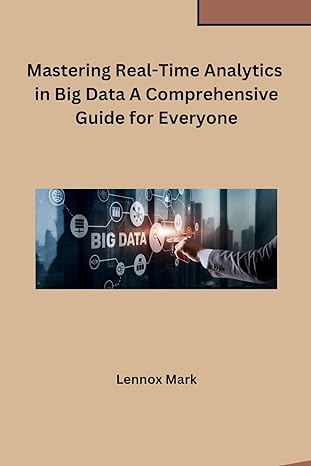Answered step by step
Verified Expert Solution
Question
1 Approved Answer
you analyze your strengths and weaknesses, the question types are indicated. After reading the selection, answer the following questions with a, b, c, ord. To
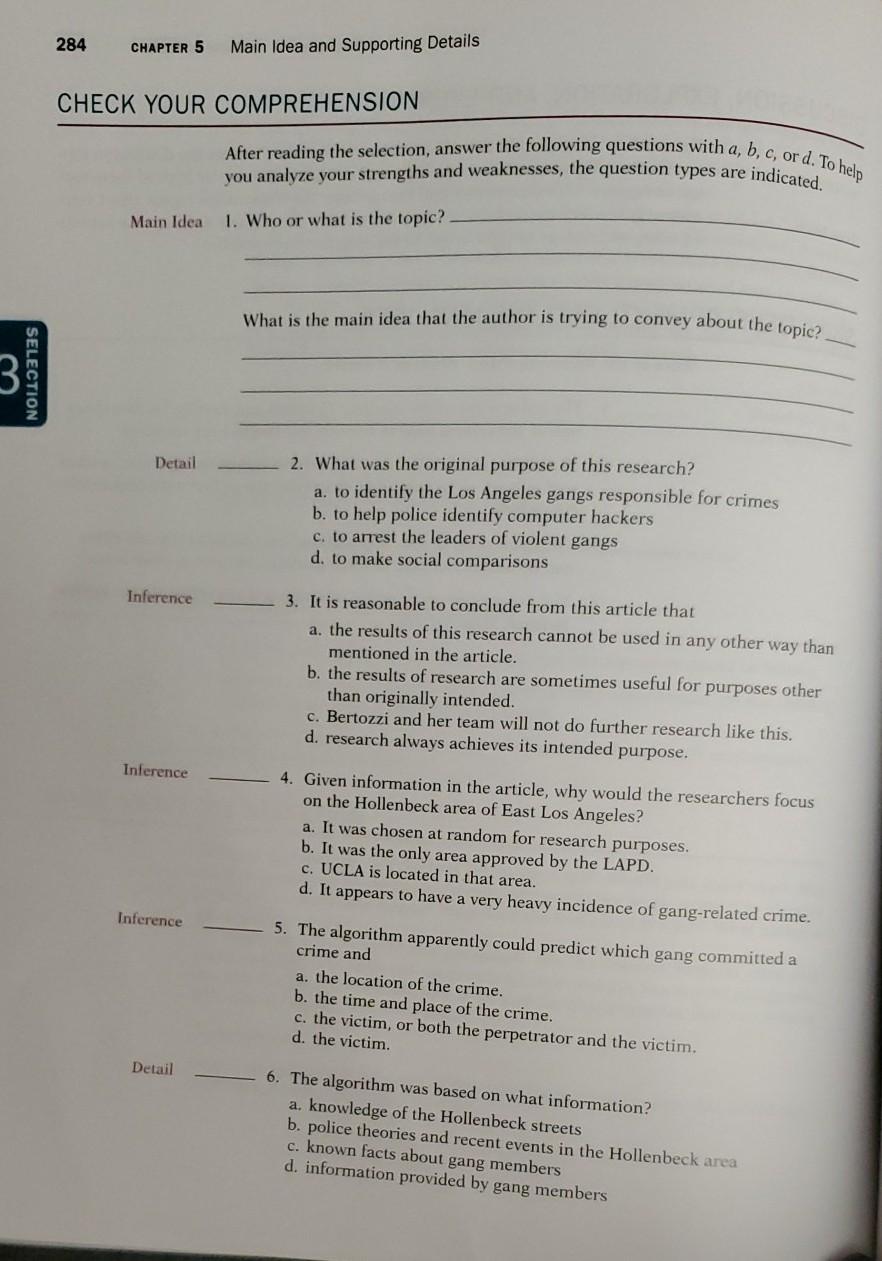
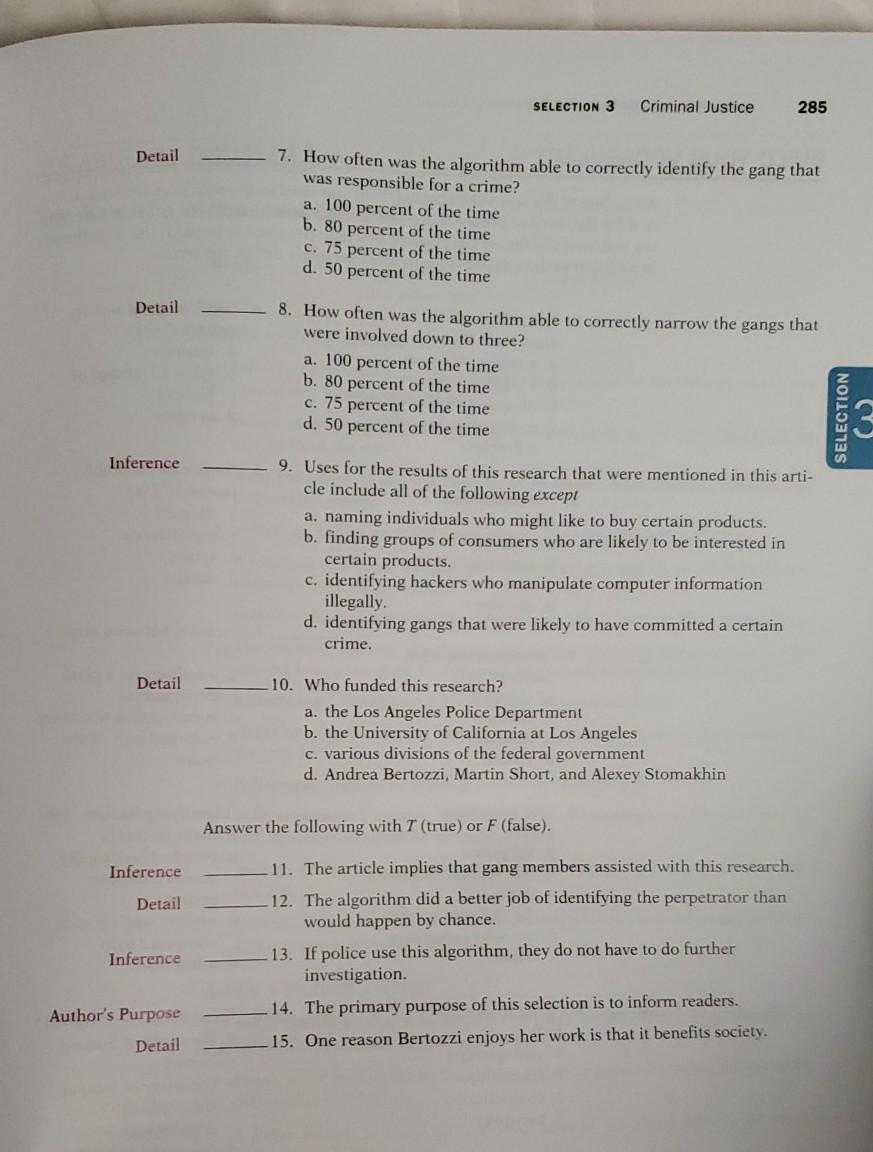
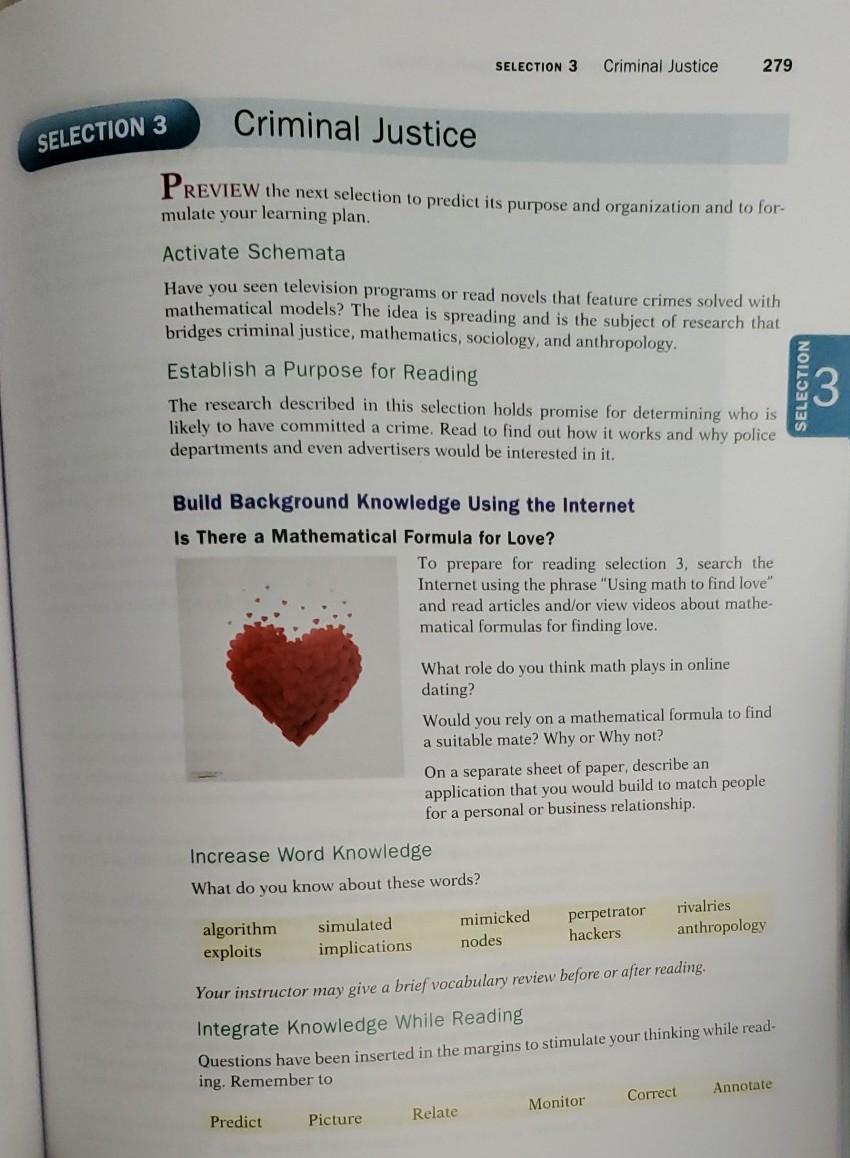
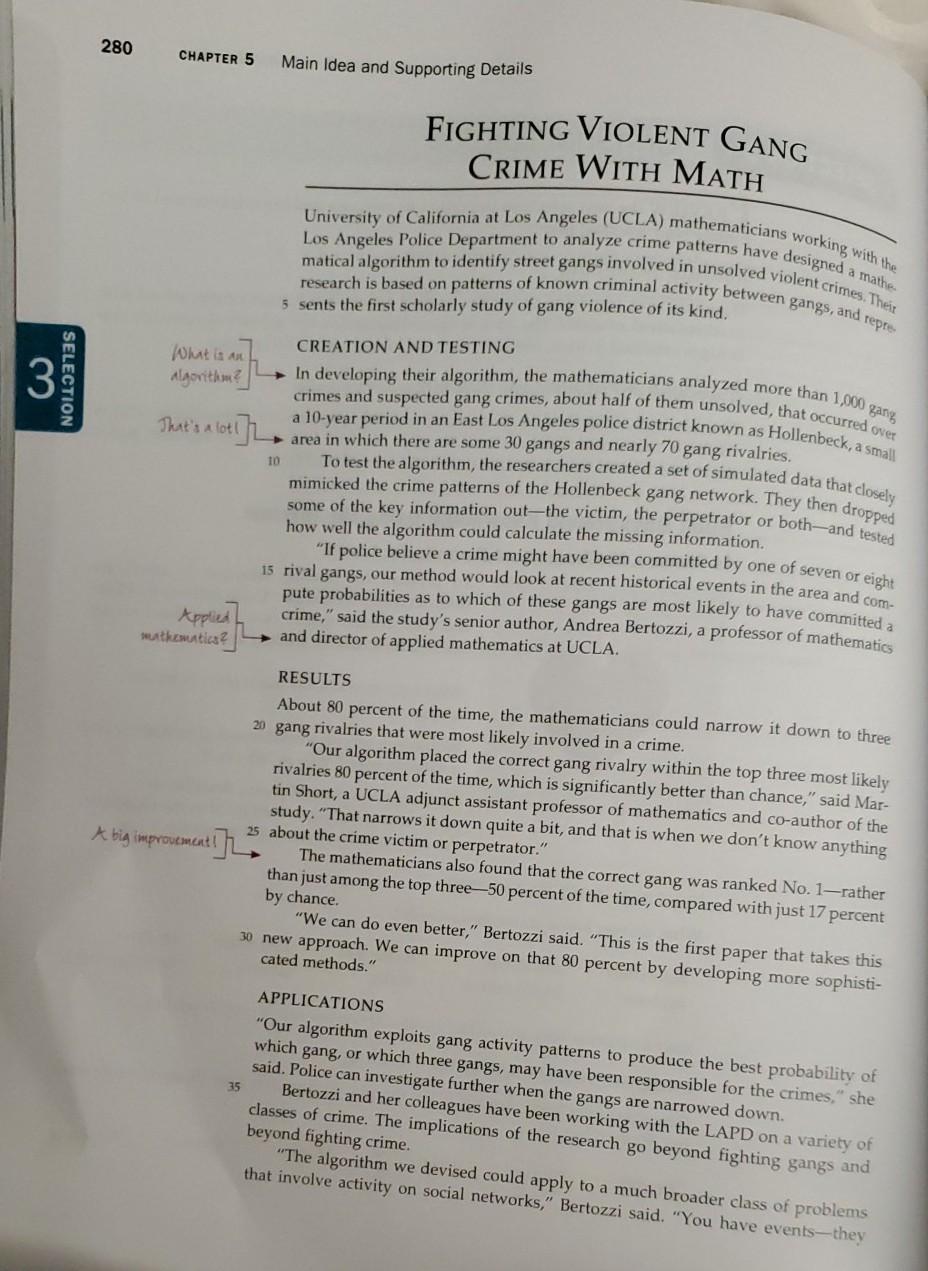

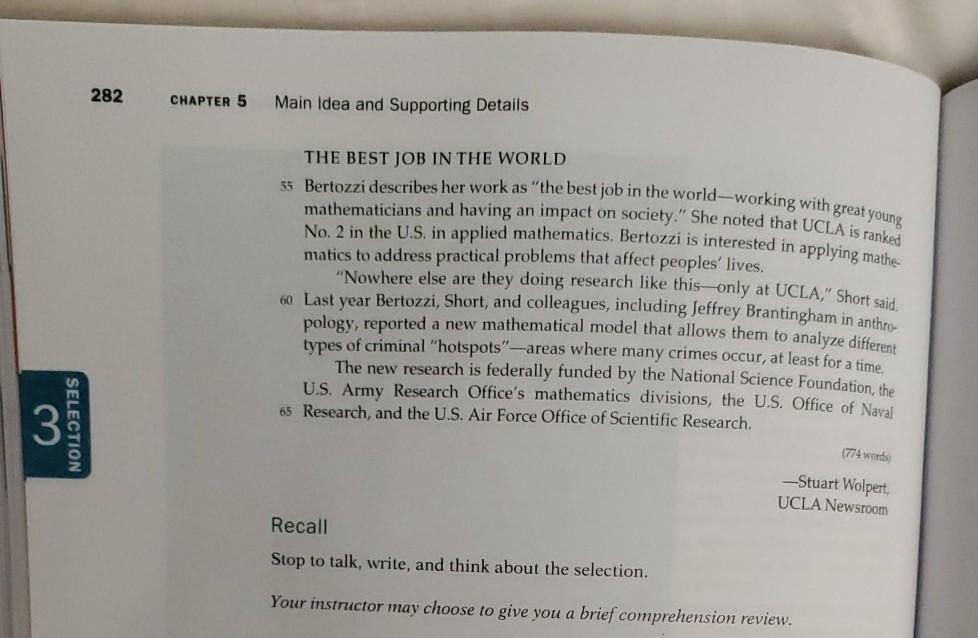
you analyze your strengths and weaknesses, the question types are indicated. After reading the selection, answer the following questions with a, b, c, ord. To help 284 CHAPTER 5 Main Idea and Supporting Details CHECK YOUR COMPREHENSION Main Idea 1. Who or what is the topic? What is the main idea that the author is trying to convey about the topic? 3 SELECTION Detail 2. What was the original purpose of this research? a. to identify the Los Angeles gangs responsible for crimes b. to help police identify computer hackers c. to arrest the leaders of violent gangs d. to make social comparisons Inference 3. It is reasonable to conclude from this article that a. the results of this research cannot be used in any other way than mentioned in the article. b. the results of research are sometimes useful for purposes other than originally intended. c. Bertozzi and her team will not do further research like this. d. research always achieves its intended purpose. Inference 4. Given information in the article, why would the researchers focus on the Hollenbeck area of East Los Angeles? a. It was chosen at random for research purposes. b. It was the only area approved by the LAPD. c. UCLA is located in that area. d. It appears to have a very heavy incidence of gang-related crime. Inference 5. The algorithm apparently could predict which gang committed a crime and a. the location of the crime. b. the time and place of the crime. c. the victim, or both the perpetrator and the victim, d. the victim. Detail 6. The algorithm was based on what information? a, knowledge of the Hollenbeck streets b. police theories and recent events in the Hollenbeck area c. known facts about gang members d. information provided by gang members SELECTION 3 Criminal Justice 285 Detail 7. How often was the algorithm able to correctly identify the gang that was responsible for a crime? a. 100 percent of the time b. 80 percent of the time c. 75 percent of the time d. 50 percent of the time Detail 8. How often was the algorithm able to correctly narrow the gangs that were involved down to three? a. 100 percent of the time b. 80 percent of the time c. 75 percent of the time d. 50 percent of the time SELECTION Inference 9. Uses for the results of this research that were mentioned in this arti- cle include all of the following except a. naming individuals who might like to buy certain products. b. finding groups of consumers who are likely to be interested in certain products. c. identifying hackers who manipulate computer information illegally d. identifying gangs that were likely to have committed a certain crime. Detail 10. Who funded this research? a. the Los Angeles Police Department b. the University of California at Los Angeles c. various divisions of the federal government d. Andrea Bertozzi, Martin Short, and Alexey Stomakhin Answer the following with T (true) or F (false). Inference Detail Inference 11. The article implies that gang members assisted with this research. 12. The algorithm did a better job of identifying the perpetrator than would happen by chance. 13. If police use this algorithm, they do not have to do further investigation. 14. The primary purpose of this selection is to inform readers. 15. One reason Bertozzi enjoys her work is that it benefits society. Author's Purpose Detail SELECTION 3 Criminal Justice 279 Criminal Justice SELECTION 3 PRI PREVIEW the next selection to predict its purpose and organization and to for- mulate your learning plan. Activate Schemata Have you seen television programs or read novels that feature crimes solved with mathematical models? The idea is spreading and is the subject of research that bridges criminal justice, mathematics, sociology, and anthropology. Establish a Purpose for Reading The research described in this selection holds promise for determining who is likely to have committed a crime. Read to find out how it works and why police departments and even advertisers would be interested in it. SELECTION 3 Build Background Knowledge Using the Internet Is There a Mathematical Formula for Love? To prepare for reading selection 3, search the Internet using the phrase "Using math to find love" and read articles and/or view videos about mathe- matical formulas for finding love. What role do you think math plays in online dating? Would you rely on a mathematical formula to find a suitable mate? Why or Why not? On a separate sheet of paper, describe an application that you would build to match people for a personal or business relationship. Increase Word Knowledge What do you know about these words? algorithm simulated mimicked perpetrator rivalries exploits implications nodes hackers anthropology Your instructor may give a brief vocabulary review before or after reading. Integrate knowledge While Reading Questions have been inserted in the margins to stimulate your thinking while read- ing. Remember to Correct Annotate Monitor Predict Picture Relate 280 FIGHTING VIOLENT GANG CRIME WITH MATH Los Angeles Police Department to analyze crime patterns have designed a mathe University of California at Los Angeles (UCLA) mathematicians working with the matical algorithm to identify street gangs involved in unsolved violent crimes. Their research is based on patterns of known criminal activity between gangs, and repre In developing their algorithm, the mathematicians analyzed more than 1,000 gang crimes and suspected gang crimes, about half of them unsolved, that occurred over a 10-year period in an East Los Angeles police district known as Hollenbeck, a small To test the algorithm, the researchers created a set of simulated data that closely mimicked the crime patterns of the Hollenbeck gang network. They then dropped some of the key information out-the victim, the perpetrator or both-and tested CHAPTER 5 Main Idea and Supporting Details 5 sents the first scholarly study of gang violence of its kind. CREATION AND TESTING algorithme? area in which there are some 30 gangs and nearly 70 gang rivalries. 10 What is an 3 SELECTION That's a lot! how well the algorithm could calculate the missing information. "If police believe a crime might have been committed by one of seven or eight 15 rival gangs, our method would look at recent historical events in the area and com pute probabilities as to which of these gangs are most likely to have committed a crime," said the study's senior author, Andrea Bertozzi, a professor of mathematics and director of applied mathematics at UCLA. Appled) mathematics? RESULTS About 80 percent of the time, the mathematicians could narrow it down to three 20 gang rivalries that were most likely involved in a crime. "Our algorithm placed the correct gang rivalry within the top three most likely rivalries 80 percent of the time, which is significantly better than chance," said Mar- tin Short, a UCLA adjunct assistant professor of mathematics and co-author of the study. "That narrows it down quite a bit, and that is when we don't know anything 25 about the crime victim or perpetrator." The mathematicians also found that the correct gang was ranked No. 1-rather than just among the top three50 percent of the time, compared with just 17 percent by chance "We can do even better," Bertozzi said. "This is the first paper that takes this 30 new approach. We can improve on that 80 percent by developing more sophisti- cated methods." k big improvement 35 APPLICATIONS "Our algorithm exploits gang activity patterns to produce the best probability of which gang, or which three gangs, may have been responsible for the crimes," she said. Police can investigate further when the gangs are narrowed down. Bertozzi and her colleagues have been working with the LAPD on a variety of classes of crime. The implications of the research go beyond fighting gangs and beyond fighting crime. "The algorithm we devised could apply to a much broader class of problems that involve activity on social networks," Bertozzi said. "You have events--they 281 Criminal Justice SELECTION 3 12 {oss (ww.) wiswi..w w V A N. & . w (Jxw.) w x W 40 () SELECTION 3 ...cos Cose We wel + whitwal & we wilt nu acopertueurs & wel write a wet tar(weltwy + wpi) 8 Welt wip + J & -{ght Eylu + & E - VEST Eq* + Ej i cos
Step by Step Solution
There are 3 Steps involved in it
Step: 1

Get Instant Access to Expert-Tailored Solutions
See step-by-step solutions with expert insights and AI powered tools for academic success
Step: 2

Step: 3

Ace Your Homework with AI
Get the answers you need in no time with our AI-driven, step-by-step assistance
Get Started


